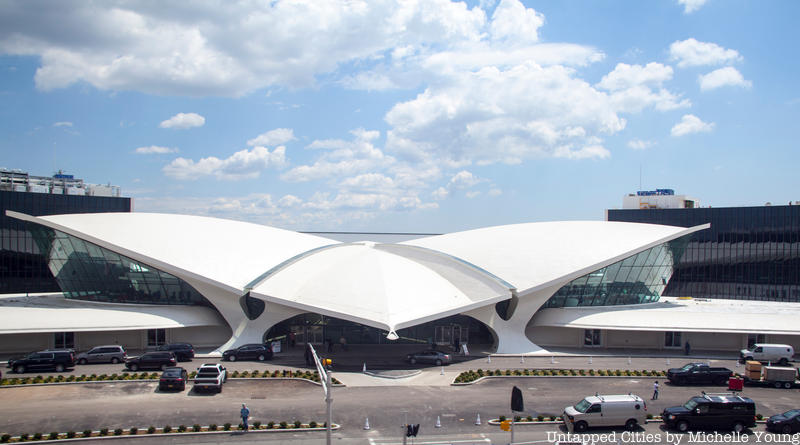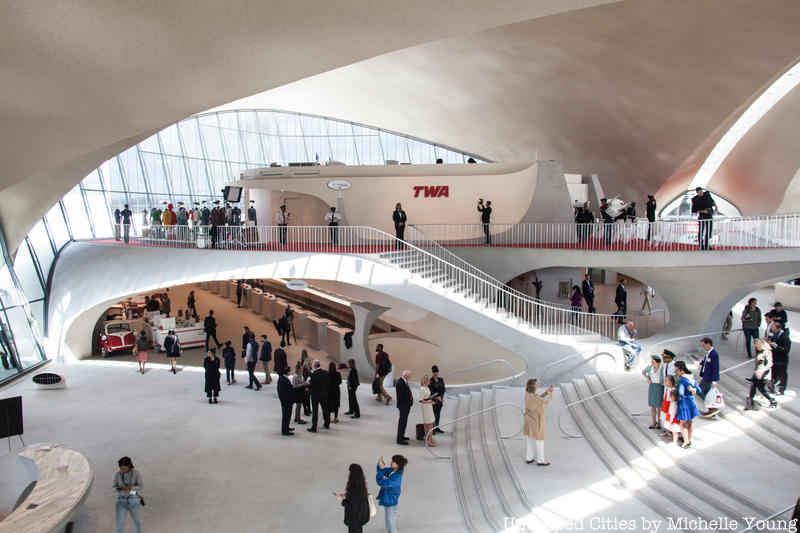4. TWA Flight Center

Eero Saarinen’s TWA Flight Center at JFK Airport is now considered an architectural masterpiece. However, with its curved reinforced concrete structure it broke the mold of boxy Modernism and received mixed reactions when it debuted in 1962. Most press coverage praised it for resembling a giant bird in flight. Saarinen, who died the year before it opened, dismissed this overt symbolism, saying the design meant to convey the “excitement of travel.”
Instead, many of his peers saw the bird and hated it: “a disgraceful, expressionist mannerism,” as architect Philip Johnson later recalled. Italian engineer-architect Pier Luigi Nervi believed “that Saarinen has allowed the purely ornamental instincts of the architect to take undue precedence over the engineer’s feeling for sound economic construction.”
British architect Alan Colquhoun ridiculed its “crude juxtaposition of incompatible forms” and even architecture critic Allan Temko, an admirer of Saarinen, concluded “its eloquence seems too rich for the content of the problem and in the context of its surroundings.”

Those negative sentiments did not prevail, enabling it to survive obsolescence and abandonment until its recent nostalgic transformation into the TWA Hotel. In terms of recent critique, Michael Kimmelman, architecture critic for the New York Times, focused on the hotel’s initially rocky soft opening and challenging service, and felt that the hotel is “a theme park for that fantasy version of 1962.”. One of our readers however, who visits the hotel regularly, told us this week that the service was good, and even Kimmelman admitted that Richard Southwick, architect from Beyer Blinder Belle that led the restoration, ” deserves a key to the city. I watched people walk around as if in a trance, snapping selfies, pointing and gazing at the thin, vaulted, soaring, twin-tortoise-shell concrete roof, breathing deeply, to inhale the building’s aura, lingering because, well, just being in that space seems to inspire happiness.”





